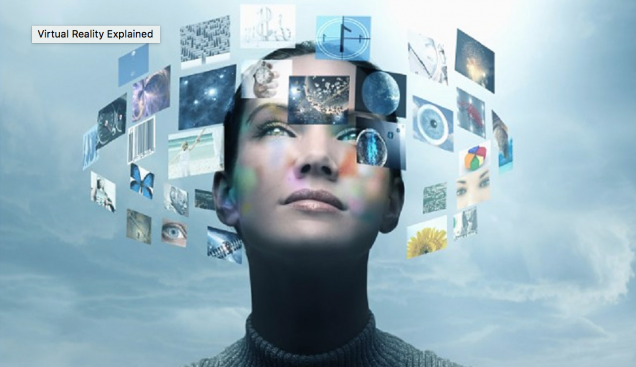Is this Real Life or Virtual Reality?

In recent years, many new technologies have been aiming to make virtual reality a thing of the present rather than just a vision. Defining virtual reality as experiencing an illusion different from that of the present, achieving virtual reality immersion has always been a goal of ours starting from the 1800s. No actual machine was created however, to experience the all senses until the 1930s-1950s with the creation of the Sensorama by Morton Heilig, and even then the machine was too big to carry around. Currently, we have many devices that actually simulate ourselves in a virtual environment and are a lot more mobile than they were in the past. Oculus Rift, HTC Vive, and even Google Cardboard are all different ways you can experience a dimension different from the present. Although we may view these worlds as different, new studies have begun connecting virtual reality to real life applications.
A recent study has shown that virtual reality is now being used to show how our brain may use perception and not sensation to regulate emotions and behavior. This study, done by Dr. Dobricki and Dr. Pauli, was done by having healthy people explore a VR-simulation of a forest glade. They had the participants walk across a plank with each of the participants given oneof four different set ups: having the height be either that of the trees or that of the ground and/or having the plank be bouncy or steady. The results showed that having a bouncy plank compared to that of the steady plank on a high pillar made the head look mainly below the horizon and had the participant mark the experience as negative. However, while the bouncy plank instead of the steady plank was on the ground surface, the participants had the head above the horizon and rated the experience as positive. These results largely show how perception and not necessarily the sensation of an environment could shape individuals’ emotions and behavioral responses. With that being said, many techniques of therapy have already begun adopting VR-stimulation in therapeutic practices because of its ability to affect people’s emotions.
New therapeutic techniques have been adopted with the rise of VR. The new adoration for the new technology comes from virtual reality’s ability to have control over variables while creating a naturally rich experience. Difficulties in traditional therapeutic techniques include the difficulty of creating a controlled environment, without sacrificing the ecological validity of said environment. VR has maximum control over the environment while allowing for a natural environment for the patient to behave in. With this practice being more and more accepted, maybe VR will start to be a part of everyday life and soon integrate with what we know to be reality. Time can only tell what new technologies this world will bring.
~ Albert Wang
Sources:
Virtual Reality Study Finds Perceptions of Body and Environment Affect How We Feel
Virtual reality in neuroscience research and therapy
Sensorimotorbody-environment interaction
Image Source:
October 17, 2016
Virtual reality is going to change our lives :o
October 24, 2016
And do you know that Virtual Reality Exposure Therapy is aimed at providing relief from post-traumatic stress?! This approach has been shown to produce a meaningful reduction in PTS symptoms. Patients, with the help of clinicians, confront their trauma memories in a virtual world. This was a really interesting fact for me, I didn’t knew it.
January 9, 2017
Virtual Reality, I like this …..